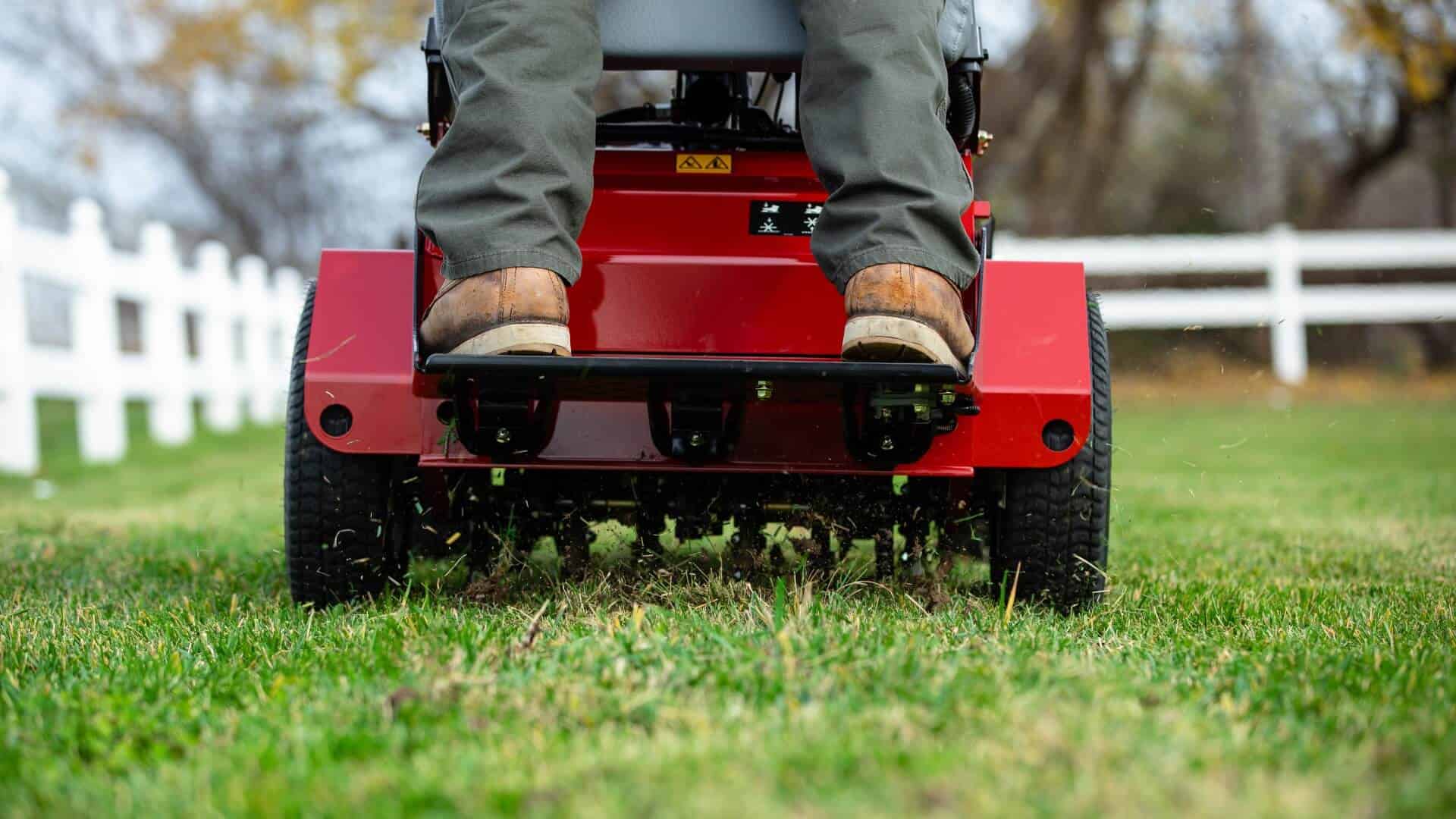
Many lawn care professionals and homeowners think fall’s the time to aerate and overseed. But there are good reasons for aerating in the spring instead—especially if you didn’t do it in the fall. If you’re facing damaged spots, bare patches or thinning due to foot traffic, consider adding aeration to your spring to-do list.
Spring Aeration
Before you get started, however, there’s an order you have to follow: for the best results, aerate before overseeding. Thorough aeration opens up the roots, allowing them to take in more oxygen, nutrients and water. Aerating in the spring takes advantage of the grass’s natural growth cycle, delivering even more nutrients and oxygen when plants may need it most. Aeration is best timed for just before or during high growth—but not before or during high-stress periods, like extreme heat or drought. This makes spring, with cool temps and plentiful rain, an ideal time for aerating cool-season grasses. Likewise, late spring and early summer is an ideal time for aerating warm-season grasses.
Don’t start out your spring lawn care with aeration, though. Mow two or three times to be sure the grass is growing fast enough to take advantage of increased air exchange in the root zone. This will also give you a better idea of how healthy your lawn is and whether you should overseed after aerating.
One caveat to spring aeration: grass is not the only plant taking advantage of spring growth cycles. Weeds are, too, and aerating can bring buried seeds to the surface of your lawn, where they germinate and increase weed competition. Fertilizing and using a pre-emergent weed killer can reduce the potential for weeds after aeration. If you’ll be overseeding thin and bare areas, skip the weed killer—this will prevent your grass seeds from germinating.
Spring Overseeding
Overseeding after aeration will provide fresh growth, and give it a fuller, thicker appearance. Overseed when there’s abundant rain and sunshine; you’ll also want to be past the last frost date, as frost will kill tender young roots. Overseeding can set your lawn up for success later in the season, as a thick, healthy lawn will be better able to withstand summer stresses.
How Often Should I Aerate My Lawn
Experts recommend you aerate and overseed at least once per year. For lawns with heavily compacted soil or a high clay content, aerating twice a year may be best.
What Other Spring Maintenance Does My Lawn Need
For a complete list, check out our spring lawn prep infographic.



